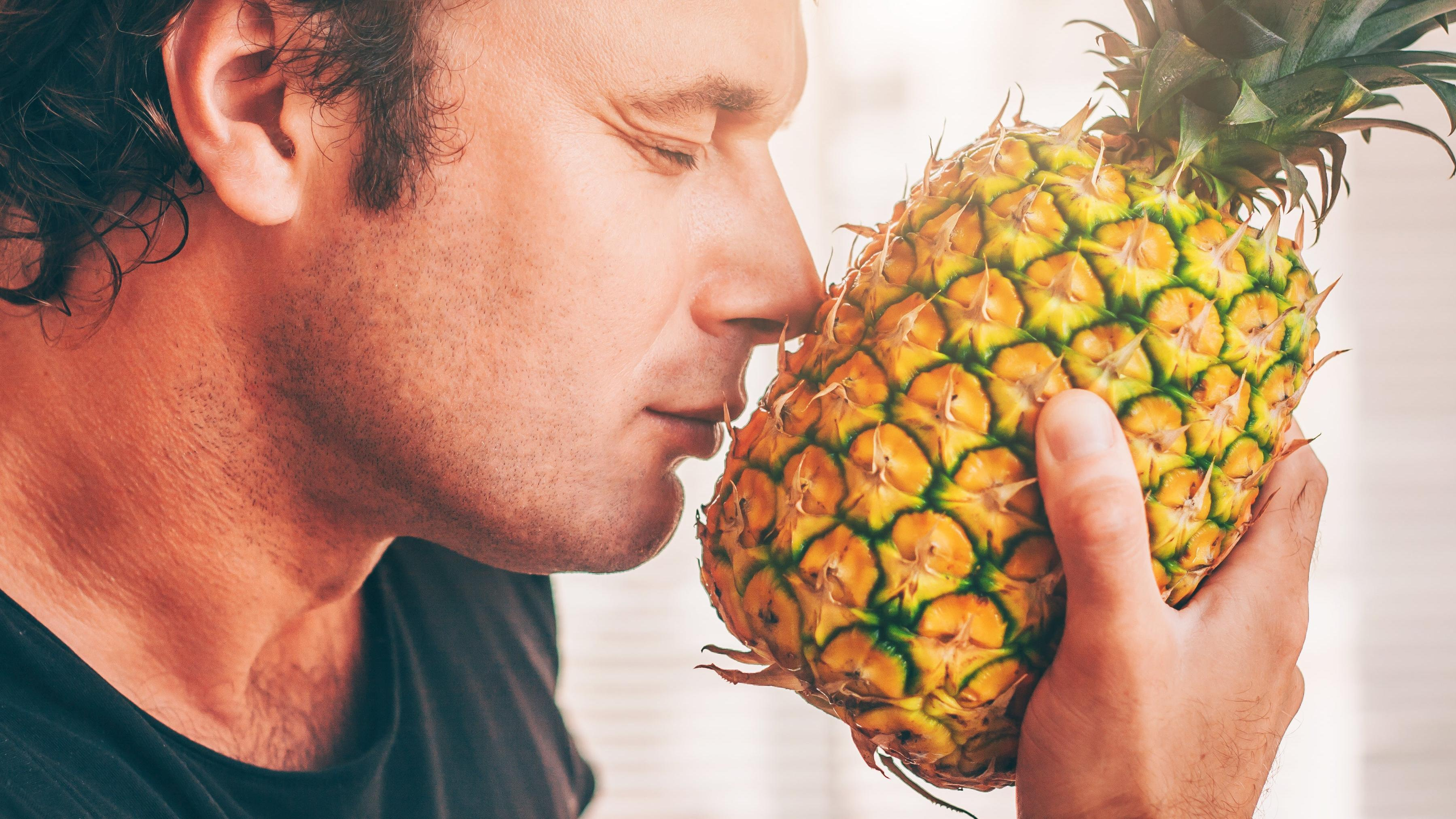Sniff Your Pineapples
You don't have to settle for mouth-puckering tartness.
We may receive a commission on purchases made from links.
It's now picnic season, which means fresh fruit salad. One indispensable fruit in any great fruit salad is pineapple; its fresh, assertive sweetness meshes so well with so many other fruits, it's almost a no-brainer to include it in the medley. Although the canned stuff is okay, there's nothing better than buying a whole fresh pineapple and slicing it yourself, even if it is a little extra work. But how do you know when a pineapple is ripe and worth buying?
Sniff your pineapple’s bottom
The telltale sign of whether or not a pineapple is ripe is the smell. Yup, it's that easy. Sniff its bottom (one of the only types of bottom you can sniff in public), and if its signature bright, tart, and floral scent is detectable, you should be good to go. An underripe pineapple's smell won't be quite so identifiable as pineapple yet.
Check the color
The exterior of an underripe pineapple will appear green between its spines. Typically, most of the pineapples at the store will look like this, since they were picked before they fully ripened. Unfortunately, pineapple is a fruit that doesn't continue ripening after it's picked. As it matures, the fruit ripens via the steady supply of starch that the stem feeds to it, and when it's cut from its base, the ripening process stops.
What you want to look for is some yellow. That golden color indicates there's some ripeness to the fruit. If the pineapple is mostly yellow between the spines, you've hit the jackpot; just make sure those areas of the pineapple aren't mushy on the outside, which means it's too ripe.
If you store a pineapple upside down, it can better distribute sugar and starch through the rest of the fruit, according to MasterClass. That way the entire fruit will be sweet.
Of course, if you know how to select a ripe pineapple in the first place, you'll already be in good shape. So go enjoy that picnic spread, and don't forget the fruit salad.
